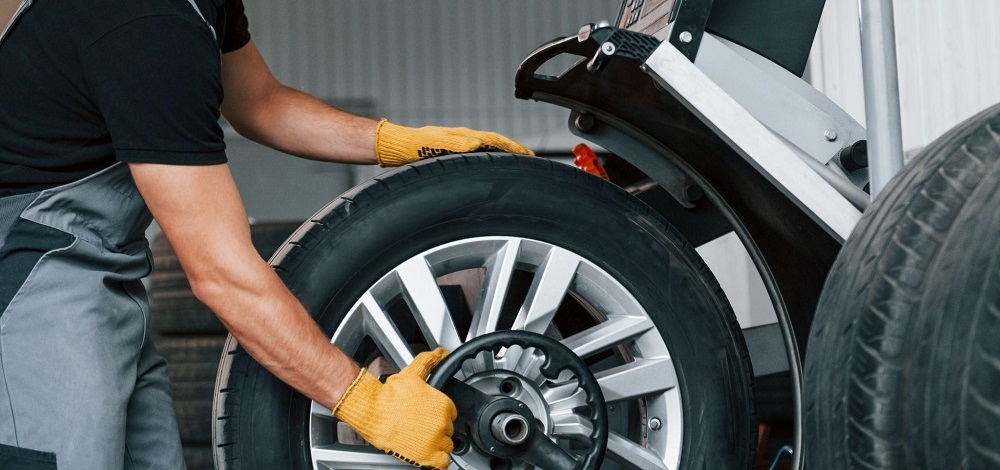Morris Tire Service: Dependable and Cost Effective Care
Morris Tire Service: Dependable and Cost Effective Care
Blog Article
Tire Repair Myths Debunked: Dividing Reality From Fiction
In the realm of automobile maintenance, tire repair service holds a substantial area, yet it is frequently shrouded in myths and mistaken beliefs that can result in complication for automobile proprietors. Comprehending the difference in between fact and fiction when it pertains to tire fixing is critical for ensuring both security and cost-effectiveness. From the mistaken beliefs surrounding patching versus plugging a pierced tire to the efficiency of various tire sealers, there are a number of essential locations where quality is required to make educated choices. Let's clarify some typical tire repair work misconceptions and separate them from the truth to empower you with the understanding needed to navigate this necessary aspect of car maintenance.
Typical Tire Repair Service Misconceptions
Eliminating widespread misconceptions bordering tire repair work is critical for keeping roadway safety and security and expanding the longevity of your lorry's tires. It is crucial to recognize that not all leaks are developed equivalent; while some might undoubtedly call for a tire replacement, the bulk can be safely fixed.
An additional false impression is the idea that a DIY tire repair package is a sufficient option for all tire problems. While these sets can be handy for short-term fixes in emergency situations, they are not a permanent option and may not resolve the underlying trouble (tire shop near me). Looking for the proficiency of a certified tire technician is constantly advised to make sure the security and stability of the tire

Can You Repair a Punctured Tire?
Fixing a pierced tire is a common practice in the auto sector, commonly performed by expert specialists following certain standards and requirements. Not all punctures can be repaired. The location, size, and extent of the leak are vital factors in figuring out if a tire is repairable. Slits found on the step location of the tire are usually repairable as long as they are within a certain size restriction and do not impact the tire's structural stability.
It is important to keep in mind that punctures near the sidewall or shoulder of the tire are generally not repairable due to Resources security problems. Such locations undergo considerable stress and anxiety and flexing, making repair work unstable and potentially dangerous. In addition, if the leak is as well large, exceeding the advised repairable size, or if the tire shows indicators of inner damage, it is safer to change the tire completely.
The Reality About Patching Vs. Connecting
When considering the repair of a pierced tire, recognizing the distinctions between look here patching and plugging is vital for making notified decisions pertaining to tire maintenance and security. Patching involves fixing the tire from the inside, where a spot is related to cover the leak. This approach is thought about more trusted and long-lasting as it addresses the damage internally, decreasing the risk of air leak and more tire damages. On the other hand, plugging is a fast fix that includes placing a rubber plug right into the pierced area from the exterior. While connecting is practical and can be done without removing the tire from the edge, it is generally considered a short-lived remedy and might not supply the exact same degree of sturdiness as a patch.
Misconception: All Tire Sealers Work

When selecting a tire sealant, think about elements such as the dimension of leaks it can effectively fix, compatibility with tire stress surveillance systems (TPMS), and whether it is risk-free for the tire material. Checking out testimonials and seeking suggestions from professionals can help you make a notified choice. In addition, regular maintenance and prompt substitute of sealer can aid guarantee ideal efficiency. Bear in mind, while tire sealants can be advantageous in emergency situations, they More about the author are not an alternative to proper tire treatment and maintenance.
Best Practices for Handling Flat Tires
In light of the differing effectiveness of tire sealants, recognizing finest techniques for managing flat tires is critical for keeping roadway security and vehicle performance. Loosen the lug nuts, raise the vehicle with the jack, get rid of the lug nuts and flat tire, and replace it with the spare tire. Store away the flat tire, tools, and devices, and bear in mind to check the spare tire's stress periodically.
Final Thought
To conclude, it is essential to separate reality from fiction when it pertains to tire fixing misconceptions. Comprehending the fact about covering vs. connecting, the effectiveness of tire sealants, and finest methods for taking care of blowouts can aid make certain the safety and security and long life of your tires. By exposing common mistaken beliefs and adhering to correct repair service standards, you can make informed choices when it involves maintaining the health and wellness of your lorry's tires.
Report this page